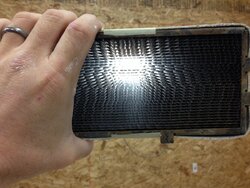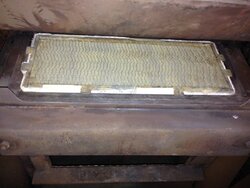I'm not debating that the surface of the steel warms up and cools down faster (lower mass, much higher thermal conductivity), but why would steel and ceramic begin operation at different temperatures?
A quote regarding steelcats from Condar's catayst website:
View attachment 232081
If I baked one of each cat at 450° in an electric oven for six hours, why would the steel one be ready to eat smoke while the ceramic one isn't? I assume they have the same catalyst(s) on the surface of the substrate.
If you greatly raise or lower the surface area of either one by changing the cell size, the question of minimum operating temperature doesn't vary.
(Also, now I want a stove that would hold one of each side by side with perfectly balanced air flow, and temperature and flow rate sensors before and after the cats. This in turn leads me to worry that you are trying to bait me into becoming a combustion engineer just to fill your vacancies at work....

)






